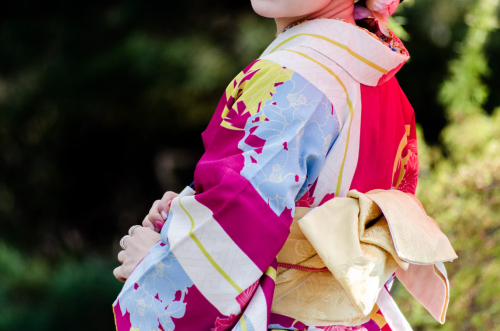Clothes make the man (and woman). Whoever was the author of these words (we love to think that it was Mark Twain but in fact, the saying goes back to the Middle Ages), they are still true today. Indeed, the clothes we wear can make quite a statement.
With an eco-friendly lifestyle being a huge trend all over the world, more and more people are trying to contribute to the common cause of saving our amazing planet. They stop using plastic stuff, opt for reusable sandwich wraps, recycle glass and paper…
But how about the clothing? Believe it or not, your wardrobe is a very important part of the plot and it’s time to take a close look at what’s inside. Here is how to make your wardrobe more sustainable and really eco-friendly.
When Old Becomes New
When you’re plotting to buy a new piece of clothes, consider thrifting. Yes, you read it right – with just a little bit of research, you can get a real bargain.
The great bulk of people have their closets stuffed with things they have worn just a couple of times and do not want to use anymore for various reasons.
Instead of keeping all those dresses, jackets, and jeans in their wardrobe for another five years or even worse, tossing them in the trash, eco-conscious consumers opt for selling their clothes.
Many people take advantage of the opportunity to come in possession of a high-quality, often branded item for a tiny bit of its original price, all the more so, buying online has never been easier and more secure.
Alternatively, you can pay a visit to local garage sales or simply kickstart clothing swaps with your friends or neighbors.
It is also a good idea to look for used pieces when you know that you won’t wear them often. For instance, if you need a bridesmaid dress, a pair of shoes to match a specific skirt or a skiing suit for your next winter holidays – why pay a lot of money for something you might wear only once and never again?
Take A Closer Look at Your Wardrobe
Streamlining is key, hence dive into the depths of your wardrobe and bring to light everything you have forgotten about a long time ago.
Consider carefully every single piece of your clothes to determine if there are chances you would wear it again. As a rule, if you haven’t taken it off the rack for a couple of years, it is a sure sign you wouldn’t do it in the future.
As an eco-conscious person, think of donating everything you do not need to charity or a thrift store. Needless to say, before offering your clothes to people you do not know, do not forget to ask your neighbors, friends, or mums in the park if they need some of your stuff.
You will be surprised by how many of them might be interested in your offer.
Opt For Sustainable Fabrics
This one is pretty easy to follow since natural fabrics are not only sustainable but also comfortable to wear. Avoid synthetic fabrics as they all are created with the use of chemicals and plastic.
Even though polyester and acrylic definitely have their own virtues, they are not good for your skin, and they are harmful to the environment, causing microplastic pollution.
Although some clothing brands are now utilizing recycled plastic to produce their products (which is certainly good!), the point is such fabrics are still not biodegradable, and once thrown, they are not going to decompose.
Less Is More
With a plethora of options right at our fingertips, we tend to buy clothes we do not really need. More than that, a lot of people often do not have an idea of how they will fit the new arrival into their existing wardrobe.
The bottom line is when you feel like shopping for your sought-after piece of clothes, set aside a couple of minutes to think it all over.
Do you really need another red jacket? Will you really wear this gorgeous pair of high heels more than twice a year? Try to envision your desired outfits and create combinations with the things you’ve already got.
If you obviously need to get a new piece, buy intentionally, considering all pros and cons and figuring out which colors and models can work best with your wardrobe.
Making your wardrobe eco-friendly can be a lot of fun and help you save a lot of your hard-earned money. Stick with natural fabrics and eco-conscious brands, and stay away from chaotic shopping.





No Comments